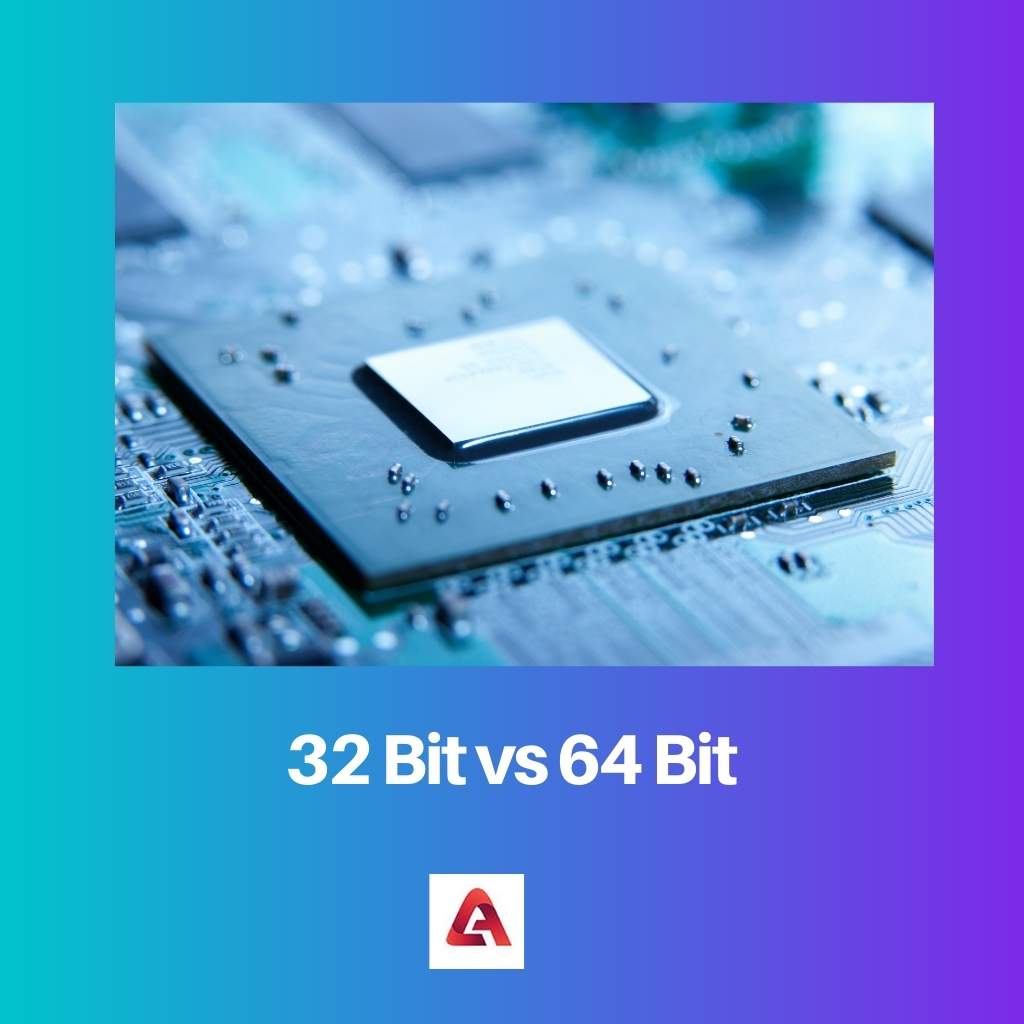The most fundamental unit of information in a computing system and the digital system is known as a ‘bit’. It is a contraction of the term ‘binary unit”.
The bit is a state of logic between two possible logic which are “0” and “1”. A contiguous group of such eight bits is called a byte.
Key Takeaways
- Vista 32-bit can only support up to 4 GB of RAM, while Vista 64-bit can support up to 128 GB of RAM.
- Vista 64-bit is faster and more efficient in processing large data sets than Vista 32-bit.
- Vista 32-bit can only run 32-bit applications, while Vista 64-bit can run 32-bit and 64-bit applications.
32 Bit vs 64 Bit
The difference between 32 bit and 64 bit is that 64 bit is way much faster, newer, and more secure than the Vista 32-bit processor. Apart from this, a 64-bit processing unit can handle more than 4 GB of RAM easily, whereas a 32 bit can handle only till 4 gb.

A 32 bit system can easily access 4 GB of RAM, or we can say that it can access 232 memory addresses.
It was used in most of the computers that were made in the 1990s and the start of the 2000s, like Windows 95, Windows 98, and Windows XP.
A 64 bit system can handle RAM even more than 4 GB and memory addresses up to 264 in number.
It delivers great graphic performance, and the launching of games, photo editing, and intense graphics games start faster and function smoothly.
Launched a while ago, Windows Vista and Windows 7 have a 64 bit processors.
Comparison Table
| Parameters of Comparison | 32 bit | 64 bit |
|---|---|---|
| Year of Launch | 1985 | 2003 |
| Accessible memory | Up to 4 GB | More than 4 GB |
| Clock cycle | It can transfer up to 32 bits of data per clock cycle | It can transfer up to 64 bits of data per clock cycle |
| Performance | It has a slow processing rate than 64 bit | It has a faster processing rate than 32 bit |
| Multi-Tasking | This is not very good at multitasking | Comparatively better than 32 bit in multitasking |
What is 32 bit?
Vista 32 bit was launched in 1985 and is a CPU architecture that can transfer data of 32 bits per clock cycle.
It is said to access up to 4 GB of RAM, but in reality, only 3.5 GB of RAM is actually accessible since the rest of it is used to store other temporary files.
Also commonly known as WOW32, a 32 bit processor was most commonly used in the 1990s and early 2000s. The most common systems with 32 bit examples are – Windows 95, Windows 98, and Windows XP.
32 bit system we used as early as in the 1960s at mainframes but only came for personal computers in the year 1985.
It can access 232 memory addresses, which means that it is compatible to transfer 32 bits of data per clock cycle.
It means that this is the amount of useful information that it processes every time it performs an action. If larger than a 32 bit size information is encountered by the system, then it will simply break it down into smaller pieces.
What is 64 bit?
Vista 64 bit is an enhanced processing unit and is used in most systems nowadays. It is a CPU architecture that is capable of transferring 64 bits of data per clock cycle.
This means that the system can process 64 bits of data every time it performs an operation.
It was introduced to the mainstream market of computers in 2003, and the first to implement it was the company Intel. All the new systems have a 64 bit processing unit like Windows 7, Windows 8, etc.
64 bit is new, fast, and much more secure. The intense graphics of the latest games like GTA V and high-end software like CAD and Photoshop can work smoothly on a system with a 64 bit version of the central processing unit.
It can easily access memory addresses up to 264 quickly.
It is great at multitasking and enables the user to switch between multiple applications without lagging or slowing the system down. It has a fast processing rate and so is a little more expensive than older processing units.
Even though it states on paper to address 264, practically, it can only access 244 memory addresses and the rest of it is used to store temporary data files.
Main Differences Between 32 bit and 64 bit
- 32 bit was launched to market in 1985 while 64 bit was introduced in 2003.
- 32 bit is old, slow and less secure as compared to 64 bit, which is new, fast and more secure.
- A 32 bit processing unit can access up to 232 memory addresses; on the other hand, a 64 bit processing unit can access up to 264 memory addresses.
- The 32 bit processor is poor at multitasking as compared to 64 bit, which is very efficient at multitasking.
- The 32 bit processor can transfer up to 32 bits of data per clock cycle, while the latter one can transfer up to 64 bits of data per clock cycle, making it a much more high-performance profile.
- https://ieeexplore.ieee.org/abstract/document/4090224/
- https://link.springer.com/article/10.1007/s11416-008-0091-3

This article does a great job of doing a side-by-side comparison of 32-bit processors and 64-bit processors, and it’s a very good read. Covers the basics and then goes to more advanced topics.
I now fully understand the difference between 32-bit and 64-bit systems. Thanks for the clear explanation.